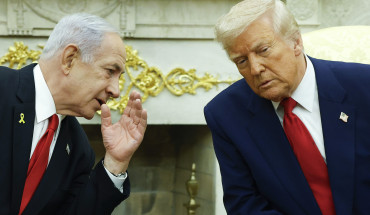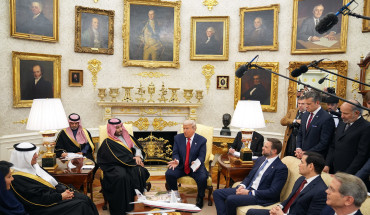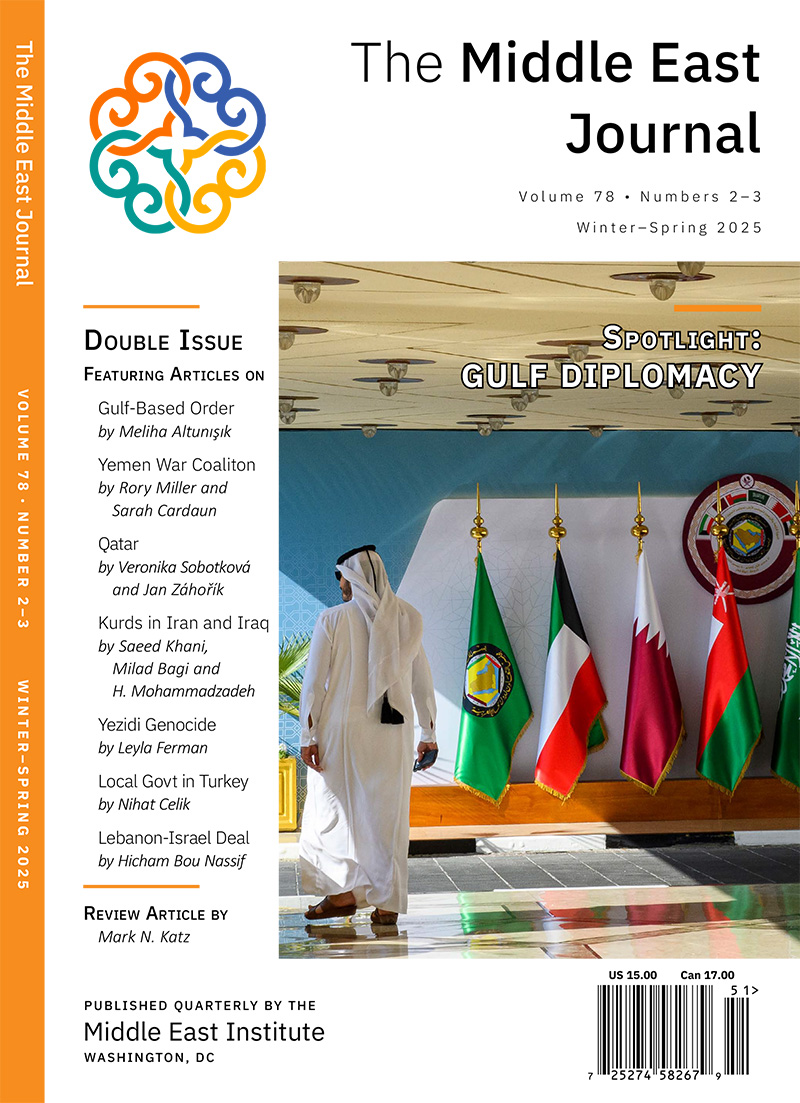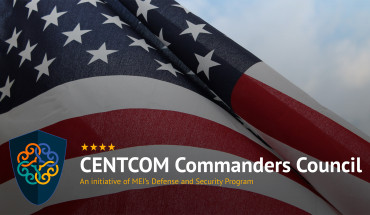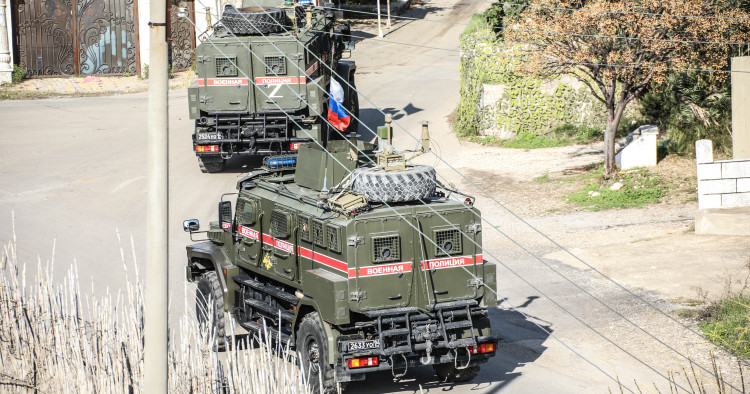Syria witnessed a radical and wide-ranging transformation after the fall of Bashar al-Assad’s regime on Dec. 8, 2024. Almost immediately, questions arose as to whether Russia would be able to maintain its military bases and political influence in a post-Assad Syria; and early reports of troop evacuations and equipment withdrawals seemed to point toward a possible, if not necessarily inevitable, exit. However, six months later, the Russian military presence has remained entrenched in strategic locations such as the Hmeimim airbase and Tartous port on the coast, as well as at Qamishli airport in the northeast. This persistence has reignited an increasingly pressing debate about Moscow’s role in the new Syria: is Russia acting in good faith as a stabilizing actor, or has its presence become an instrument of pressure hobbling the political and security transition?
History and international relations theory tells us that when the governing authority of a geopolitically significant state suddenly collapses, the consequences are rarely confined to its national borders. This is precisely why Kenneth Waltz insisted, “As nature abhors a vacuum, so international politics abhors unbalanced power. Instead, this creates power vacuums and reshapes alliances, which creates a pretext for outside powers to seek to preserve or expand their influence amidst the newly emergent balance of power in the region.” And as the late Henry Kissinger argued in his writings and in interviews, when a regional order collapses, the resulting vacuum invites the intervention of external powers seeking to shape the new balance according to their interests. This theory clearly applies to the current Syrian situation, where Russia is attempting to adapt to the changes brought about by the major regime transformation and assert its position, amidst competition, to redefine the contours of power and influence in the country.
The following article discusses the dimensions of the Russian presence, particularly in Hmeimim and Qamishli, since the overthrow of the Assad regime. Moreover, the piece analyzes the repercussions of that continued Russian presence on the fragmentation of Syria’s security landscape, its implications for Western engagement with Damascus, and the positions of several major external players regarding the future of these military bases. It culminates in a strategic assessment of the role of Russia’s bases and broader influence in Syria: does the nature of the Russian presence represent an obstacle to stability or an opportunity to renegotiate regional power dynamics?
The Russian presence and the fragmentation of the Syrian security landscape
Despite the regime’s fall, post-Assad Syria continues to suffer from a fragmented security landscape; this has been exacerbated by the Russian military presence, which maintains isolated bases and deployment points on the coast (Hmeimim and Tartous) and in the country’s northeast (Qamishli airport). Those bases are in effect “security islands” outside the new government’s already tenuous control, causing divisions among security actors as well as serving as potential flashpoints for sectarian-fueled conflict.
In Qamishli, located within the Syrian Democratic Forces’ (SDF) sphere of influence, Russia’s role has evolved. After the regime’s collapse, Moscow, according to security sources in the northeast, transitioned from a mediator to a party seeking to exploit any internal SDF divisions (especially following the March 2025 agreement between President Ahmed al-Sharaa and the SDF’s leader, Gen. Mazloum Abdi). Russia has done so by communicating with figures opposed to rapprochement with Damascus, aiming to turn the Russian base in Qamishli into a platform for destabilization, particularly in the context of imminent American withdrawal. This trend is supported by Russia’s significant reinforcement of its presence at Qamishli airport after Dec. 8, 2024, deploying advanced air-defense systems (like the Pantsir-S1) and electronic warfare units, aiming to assert its continued presence, deter rivals, and secure future leverage.
In this context, Qamishli in northeastern Syria is witnessing a notable escalation in the pace of Russian movements. Over the past several months, Moscow has intensified the dispatch of aerial military reinforcements to the city’s airport, a clear indication of its push to expand its military presence in the region. According to local security sources who spoke with this author, these movements began with the landing of two Ilyushin aircraft loaded with troops and equipment, amidst low-altitude flights of Russian helicopters over the city. Air-drop operations continued, with military aircraft arriving frequently from Hmeimim base, offloading soldiers and ammunition crates believed to contain missiles and defense systems, under a joint Russian-SDF security alert around the airport. An Antonov An-26 aircraft, used for transporting senior Russian officials, has also been spotted, reflecting increased political and military interest in the location. Recent rumors circulating among residents and security personnel suggest Russia plans to expand its airbase in Qamishli, especially with American discussions of a potential withdrawal from east of the Euphrates, which Moscow views as an opportunity to bolster its influence in the area. Analysts close to decision-making circles in Moscow suggested Russian ambitions in the northeast should be considered modest. However, Moscow’s ability to interfere and act as a spoiler, particularly within the ongoing delicate negotiations between the SDF and the transitional government, remains potent and aligns with Russia’s activity along the coast.
On the Syrian coast, widely circulated discussions on the ground indicated a direct Russian role in fueling the March 2025 disturbances between transitional government forces and militias loyal to the ousted regime (also supported by Iran and Hezbollah) resulting in mass civilian casualties. In February 2025, Russia allegedly supplied weapons to elements of the former regime prior to the start of the offensive. Concurrently, attacks on security centers near Hmeimim facilitated the defection of loyalist officers to the Russian base, which was used as a refuge for fugitives. Moscow is also accused of exploiting minorities, especially Alawites, to incite separatist tendencies, and is hosting former Assadist figures like militia leader Mohammed Jaber, who, from his granted residence in Russia, has claimed to have orchestrated the coastal attacks in March. Of course, former President Assad is also living in exile inside the Russian Federation.
Beyond direct military presence, Russia is also seeking to maintain and expand its influence in the new Syria through alternative means. Among the most readily apparent, it is continuing to provide the country with printed currency. At the same time, Moscow is pursuing various “under the table” approaches, including building up personal networks involving Syrian political, economic, and military figures; exploiting societal divisions; and presenting itself as a guarantor of minority interests. It will likely also try to penetrate vital economic sectors through new front companies to create intertwined interests and outright dependencies. This exploitation of indirect tools of influence by Moscow must be met by vigilance from the Syrian transitional government and its international partners; failure to identify them and respond in ways to protect Syria’s sovereignty could result in retention or revival of previous economic and soft power levers by Russia or Russian-backed elements of the former Syrian regime.
These events confirm that the post-Assad Russian presence has become an influential factor in keeping the security scene purposely fragmented. Moscow maintains isolated pockets of influence, providing protection and care for regime remnants — transferring some abroad (likely to North Africa) and using its presence in the northeast as a potential pressure card against the new government in Damascus. This obstructs efforts to establish justice and unify security institutions under the transitional authority, disrupting Syria’s path to stability.
Russia has always viewed its presence in Syria as a means to strategic ends. From propping up the Assad regime in 2015 by supporting its brutal bombing campaign, to negotiating and maintaining the southern reconciliation agreement with opposition forces in 2018, as well as continued joint cooperation on countering ISIS, Russia invested significant resources and capacity into building influence and controlling the Syrian landscape. These interventions provided Russia with several strategic victories, including the ability to supply and sustain Russian operations and those of their proxy groups in the African Sahel via Hmeimim, ultimately using Syria as its foothold for ambitions within the region and beyond. Russia’s desire to maintain its military presence in post-Assad Syria as well as establish a working relationship with the transitional government is also driven by its desire to save face reputationally in the aftermath of the former regime’s collapse. Ultimately, Moscow benefits from a crippled Syria with a weak government facing several internal crises — including sectarian violence and ungovernable security enclaves — because this improves Russia’s negotiating leverage and thus helps sustain levels of Russian influence in the country.
International responses to the continued presence of Russian bases in Syria
Despite the international community’s welcome of the Assad regime’s fall and the formation of a transitional government, the continued presence of Russian bases and forces in Syria remains a cause for concern among several Western nations. As the United States, the European Union, and the United Kingdom pivoted to support the post-Assad Syria, their goals included consolidating stability, preparing for refugee return, and weakening the influence of Iran and Russia, which most considered obstacles to a successful transition. Therefore, the ongoing presence of Russian forces in Hmeimim, Tartous, and Qamishli represents an immediate and long-term threat to stability (through Russian support to spoiler actors) to Syria’s next phase.
Many policymakers and analysts similarly view Assad’s fall as a “historic opportunity” to reshape the balance of power in the Levant and wider Mashreq as well as undermine Russian and Iranian influence there. This vision is based on an understanding of Russia’s strategic weakness (due to the Ukraine war and Russia’s declining credibility in the Middle East as an ally), contrasted with the legitimacy of the new Syrian transitional government, which gives the latter a stronger negotiating position vis-à-vis Moscow. Western states seek to exploit this by supporting Damascus’ ability to impose its conditions and linking international reconstruction aid, at least in rhetoric, to its commitment to limiting Russian influence amidst other strategic goals.
This stance is particularly evident in European caution. The majority of EU members along with the UK consider the continued Russian military presence a destabilizing factor regionally; and in Syria, they see it as an extension of Moscow’s destructive role during the Assad era. This fuels distrust in Kremlin promises regarding Syria’s sovereignty, especially given Russia’s role in propping up and then spiriting away Assad. Consequently, there are fears of a continued dual Russian approach: feigning support for stability while secretly working to obstruct the transformations desired by Syrians and their allies.
This Western caution has translated into policies of conditional openness toward the transitional government. While Europe and the US have made strong strides to provide diplomatic support and sanctions relief, the West still retains most pressure tools to ensure the reduction of Moscow’s and Tehran’s influence. However, the Western camp is not monolithic; there are variations in approach that continue to evolve in the wake of seismic regional shifts.
For the United States, despite initial statements indicating an American desire to see Syria free from Russian influence, there is a noticeable absence of a clear and detailed official US policy to date that definitively outlines Washington’s position on the future of Russian bases. This leaves the door open for negotiation, amidst a focus on stabilizing US relations with Moscow. Reports have also revealed Israeli pressure on Washington to allow Russian bases to remain as a “counterweight” to Turkey and to keep Syria weak and non-threatening to Israel. While regionally, Israel’s position is an outlier, with Trump not prioritizing Syria, Israeli views might gain more traction with US-Russian coordination on some emerging files, such as a joint call for an emergency United Nations Security Council session on coastal violence, reflecting a new American pragmatism.
As for the European Union and the United Kingdom, their position remains more rigid. The EU, as a closer neighbor, has consistently reaffirmed its preference for a strong, unified Syria without foreign forces (specifically Russian and Iranian) limiting its sovereignty. In light of the Ukraine war, the EU and UK largely view continued Russian influence in the Mediterranean as a threat to European security, especially with diminishing US engagement and shifting international ties. Therefore, Europeans have moved quickly to support the new government in Damascus with sanctions relief — operating with three goals in mind. The Europeans aim to fill the vacuum and support Syrians economically and politically to block Moscow’s and Tehran’s blackmail; they seek to avoid pushing Syria back into Russia’s arms; and they want to prevent another refugee wave from Syria, as well as encourage returns, in order to relieve domestic pressures regarding immigration. A “carrot and stick” policy is expected to continue: international aid and investment in Syria in exchange for reduced Syrian dependency on the Kremlin, and sanctions if obstructive Russian influence persists.
Turkish positions on Russian bases in Syria
Following the fall of the Assad regime, Turkey adopted a firm stance, rejecting the continued presence of Russian military bases in Syria, viewing them as an obstacle to the latter country’s full national sovereignty. Turkish Foreign Minister Hakan Fidan stated that Ankara “does not endorse the presence of any foreign bases in Syria — not just Russian, but any other.” This position reflects Turkey’s broader goal of ending foreign military influence and promoting a Syrian-led political settlement.
Russian bases: Obstacles to stability or a card for regional renegotiation?
From a broader strategic perspective, a debate emerges about the role played by Russian bases in the new Syria: Do they merely represent an obstacle hindering the establishment of full stability, or can they be utilized as a useful bargaining chip by Damascus or various international players? The answer to this question is complicated by multiple factors, which will be explored below. But ultimately, Russian efforts to provide stability and security within Syria have continuously fallen short since 2015, largely at the expense of the Syrian population, as Moscow’s strategic goals are not dependent on a functioning Syrian state under the new government. In addition, there has been no indication that Russia’s military presence in post-Assad Syria has actually deterred or impacted Turkish plans and operations on the ground — thus undermining Israel’s calculated support for maintaining Russian bases there.
Russian bases as an obstacle and political burden
Undoubtedly, the continued presence of foreign forces, like the Russian ones, impedes the full expression of Syrian state sovereignty and sends the wrong message not only domestically but to partners and neighbors alike. Internally, the Russian military presence in Hmeimim and Qamishli reminds Syrians of ongoing foreign interference, which could undermine the transitional government’s legitimacy if cannot address the issue. As mentioned above, Russia’s continued protection of former regime figures and covert support for loyalist groups also fuels insecurity and sectarian tensions. Western research centers have warned that Moscow might seek to ignite civil violence to maintain its role as an interventionist power, thereby slowing the unification of the army and security services. Additionally, Moscow exploits Western disagreements over its presence (like the Israeli position) to divide ranks and distract international efforts from rebuilding Syria.
However, Moscow cannot realistically follow through on its pledges to help with Syria’s massive reconstruction needs, requiring billions of dollars, given that Russia itself is already burdened by sanctions and the war in Ukraine. This potential reliance on mainly Western and Gulf funding, therefore, enables Damascus and its supporters to link investments and aid to Russia’s responsiveness to Syrian sovereignty requirements, including the future of its bases. Furthermore, frozen Syrian assets and compensation claims for war damages are essential items in any “comprehensive deal.” The Kremlin realizes that its military presence without a genuine economic contribution to Syrian recovery will become a net burden, difficult to justify.
Developments in Tartous reflect the Syrian government’s efforts to consolidate its sovereignty. In January 2025, Damascus annulled the investment contract for the Tartous commercial port with Russia’s Stroytransgaz due to the company’s failure to meet its obligations — a notable economic and sovereign move. The status of the 2017 Russian naval base agreement is more ambiguous, amidst conflicting reports about its termination, revision, or ongoing negotiation, highlighting the importance of distinguishing between the fates of the commercial port versus the naval base to understand the evolving relationship.
Economically and regarding humanitarian relief, continued Russian influence stimulates fears of future sanctions and instability, which obstructs the return of investment to Syria, particularly concerning companies based in the EU and the UK, alongside some in the Gulf. The Russian military presence near the Tartous Port also raises security concerns that could prevent the resumption of airline services or increase insurance costs for projects. Added to this, Russia’s reputation as an unreliable ally — after its belated abandonment and subsequent harboring of Assad — arouses suspicion among the new Syrians and their Western allies regarding any Russian promises of assistance. Unfulfilled promises and publicity stunts (like making Hmeimim and Tartous humanitarian corridors) fuel the narrative that Russia has become a political burden undermining trust. In turn, reducing its influence has become a Western indicator of the seriousness of the democratic transition and stability in Syria.
Russian bases as a source of leverage or pressure in balance of power struggles
Some argue that the Russian presence, despite its problems, could become a useful negotiating tool for the Syrian transitional government as well as key international powers vying for influence inside Syria or the broader region. The new government in Damascus possesses a rare bargaining chip given Moscow’s desperate need to maintain a foothold in the Eastern Mediterranean, where its bases in Syria are a lifeline for Russian regional influence within the Red Sea and supply its extensive operations in Africa. Consequently, the Syrian government’s willingness to legitimize the continued use of these bases — albeit temporarily — grants it the ability to extract concessions from the Kremlin. Indeed, Damascus has begun proposing new deals, demanding amendments to the unfair lease agreements granted by Assad, to ensure Syria benefits financially and politically. This includes requests for billions of dollars in debt relief and frozen funds as a condition for maintaining military facilities. Even the attempt to link this file to Assad’s fate (demanding his handover in exchange for the bases’ continuation), despite Russia’s refusal so far, reflects unprecedented Syrian negotiating audacity. The Kremlin understands that the new government can turn to the international community to delegitimize the bases if they are considered a threat, potentially exposing Moscow to isolation. Therefore, Russia is currently pursuing a policy of quiet bargaining, offering symbolic and often insincere aid (like President Vladimir Putin’s afore-referenced proposal to make Hmeimim a “relief hub”) and showing openness to renegotiation without firm commitments.
Regionally, competing countries can also try to leverage the Russian presence to recalibrate the balance of power. Notably, Israel has maintained communication channels with Moscow after the Assad regime’s fall despite intensifying its strikes against Iranian targets, arguing that Russia represents a safety valve against strategic surprises like Turkish expansion or a security collapse benefiting Iran or jihadists. While this Israeli gambit could theoretically help prevent an armed conflict between two important American allies in the region — though even this presumption is shaky, as noted above — it does not necessarily align entirely with US interests.
First of all, Putin has long considered Syria an important arena for provocations against Americans and their traditional allies, in response to their challenge to Russia’s invasion of Ukraine. These aggravations against the US occurred in several forms. They have included harassment of US aircraft operating over Syria. Even more antagonistically, Russia has supported and coordinated with the Assad regime and Iranian-aligned proxy groups in their attacks on US personnel. Finally, Moscow has repeatedly sought to stall or stifle previous diplomatic solutions in Syria backed by Washington.
Conversely, the West could try to make Syria a pressure point on Putin regarding Ukraine by threatening not to recognize long-term Russian arrangements in Syria unless the Kremlin changes its behavior. Recent US-Russian coordination in Syria (such as the joint call for an emergency UN meeting mentioned above) could be a double-edged sword: either a prelude to understandings or to major bargains linking a partial Russian withdrawal from Syria to Western concessions in Ukraine. For the United States and Europe, any such concessions or perceptions of a Russian victory in Ukraine, however, would have a strong detrimental impact on transatlantic unity as well as on the security situation on the ground in Europe (especially in and around the Baltic and the Black seas) and likely embolden Moscow to pursue aggression elsewhere.
Conclusion: Russia between destabilization and bargaining chip in post-Assad Syria
After its decisive though ultimately failed role in preventing the regime’s collapse, Moscow finds itself facing a different landscape with new rulers who were yesterday’s adversaries. Nevertheless, the transitional government has opted for pragmatic engagement with Russia, recognizing its status and interests, while Moscow tries to adapt its role. This equation has produced a dual reality: Russia is a player that cannot be ignored due to its military strength and ability to influence, but it is also a potential burden that arouses suspicion and doubt domestically and internationally.
Recent events have shown Russia’s inclination to play the spoiler when its interests are threatened, such as supporting regime remnant attacks on the coast and intensifying its presence in Qamishli. This indicates its readiness to destabilize to prevent its exclusion, especially if Syria is used as an arena for settling scores with the West or as a bargaining chip regarding Ukraine. However, the transitional government could still engage practically with Moscow if it took significant steps to respect Syria’s sovereignty, deal with its rulers as equals, and contribute to reconstruction efforts and refugee return.
Currently, the scales tip toward Russian bases being more of a political burden than a useful bargaining chip, either for Syria or other external actors, for achieving wider strategic aims. Broadly, the transitional government and its supporters see continued Russian penetration as an obstacle to Syria’s full liberation, and the Syrian people yearn for independence, bitterly recalling Russian bombings and support for the Assad regime. But Russia will not be easily ousted, and a long period of negotiations is expected, determined by mutual interests: Damascus demands compensation and economic support in exchange for any privileges, while Russia wants guarantees for its influence and personnel. This tug-of-war will determine the extent to which Moscow is an obstacle to be overcome versus a pragmatic partner.
The new Syria is entering a phase of unprecedented competition for influence in the country between Russian, Turkish, American, Iranian, and Israeli forces. Given the destabilizing role played by Russia’s ongoing military presence on Syrian soil, a complete withdrawal of Russian troops would be the optimal outcome for Syria’s future as well as for the Western alliance. But if that is not possible, robust coordination between the West and the Syrian transitional government could use the highly dynamic present situation as an opportunity to at least clip Moscow’s regional wings through an agreement that limits the latter’s presence in exchange for diplomatic gains that allow the Kremlin to save face. Conversely, a failure of coordination and escalating conflict could turn Russian bases into persistent hotspots of violence and undermine the authority of the new Syrian government.
Samer al-Ahmed is a Syrian journalist and researcher who focuses on developments in northeastern Syria. He holds a master’s degree in international relations and has written multiple reports and research papers for Arab and international centers. You can follow him on Twitter @sameralahmadnq.
Photo by Izzettin Kasim/Anadolu via Getty Images
The Middle East Institute (MEI) is an independent, non-partisan, non-for-profit, educational organization. It does not engage in advocacy and its scholars’ opinions are their own. MEI welcomes financial donations, but retains sole editorial control over its work and its publications reflect only the authors’ views. For a listing of MEI donors, please click here.






